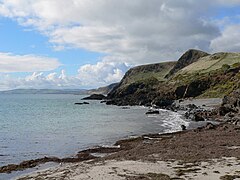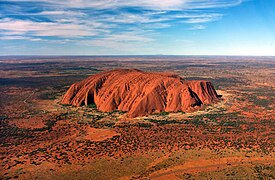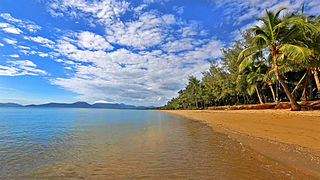Matharius
Federal Republic of Valentir République Fédérale de Valentir | |
|---|---|
Motto: Arduus ad solem "Striving towards the sun" | |
Anthem: "March of the Free People" | |
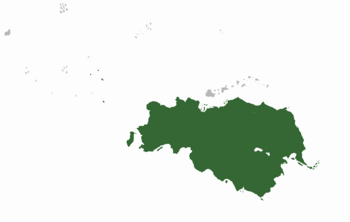 Location of the Federal Republic (green) in Sublustria (light grey) | |
| Capital | |
| Largest city | |
| Official languages | None (Nationwide) |
| Recognised national languages | Estmerish, Gaullican, Arateran, Hokotahi |
| Demonym(s) | Valentirian |
| Government | Federal semi-presidential constitutional republic |
| Helene Pauline (PRP) | |
| Johnathan Bennett (PRP) | |
| Tristan Teyssier (AP-DS) | |
| TBD | |
| Andréa Arnoux (PRP) | |
| Jérôme Chauvin (PRP) | |
| Legislature | Parliament |
| Senate | |
| Assembly | |
| Independence from Estmere | |
| Area | |
• Total | 5,675,532 km2 (2,191,335 sq mi) |
• Water (%) | 1.34 |
| Population | |
• 2017 estimate | 54,182,576 |
• 2015 census | 51,690,103 |
| GDP (PPP) | 2017 estimate |
• Total | $2.603 trillion |
• Per capita | $48,056 |
| GDP (nominal) | 2017 estimate |
• Total | $2.558 trillion |
• Per capita | $47,214 |
| Gini (2015) | medium |
| HDI (2015) | very high |
| Currency | Valentirian Pound (VP, £) |
| Time zone | Valentirian Standard Time |
| Date format | dd-mm-yy |
| Driving side | left |
| Calling code | +61 |
| Internet TLD | .va |
The Federal Republic of Valentir (Gaullican: République Fédérale de Valentir), commonly known as Valentir, is a sovereign state comprising of the mainland of the Valentirian continent, the island of New Embria and numerous smaller islands. It is a federal republic composed of 15 constituent provinces, three territories, and various possessions. At 7.6 million km2 and with over 54 million people, Valentir is the largest country in Sublustria and the 4th largest in the world by total area and the twenty-second most populous country. The capital is Valeins and the largest city is Harborough, an important global city and financial centre with an urban population of 5.1 million. Fourteen of the provinces are on the mainland of the continent. The Province of New Embria is an island located off the west coast of the continent. The various territories and island possessions are scattered about the Sublustrian Ocean, the furthest being Ruon Island. The extremely diverse geography, climate, and wildlife of Valentir makes it one of the world's X megadiverse countries.
Valentir is an emerging economic and military power, possessing the xxth largest economy and the xrd highest GDP per capita (nominal). The Federal Republic is a developed country and has a large economy by nominal GDP and by purchasing power parity. Valentir is considered to have a high-income economy and is categorised as very high in the Human Development Index. With the second-highest human development index globally, the country ranks highly in quality of life, health, education, economic freedom, and civil liberties and political rights. Valentir is a global partner of the Southern Coian Defence Initiative, a military alliance consisting of Negara, Nematsu, and Denikert. Valentir is also a member of the Community of Nations, the International Council for Democracy, the Asterian Development Council, the BHIG Group, C20, the International Trade Organization, the Global Institute for Fiscal Affairs, the Sublustrian League, and the Council for Economic Co-operation and Development (CECD).
Etymology
History
Pre-colonial history
TBD
Euclean colonisation
The first recorded Euclean sighting of the Valentirian mainland, and the first recorded Euclean landfall on the Valentirian continent (in 1629), are attributed to the Gaullicans. The first ship and crew to chart the Valentirian coast and meet with Arateran people was the Couronne captained by Gaullican navigator, Jean-Luc de Valmont. The first settlement, Valanjou, was founded in 1631 as the capital of the Viceroyalty of Ghislaine, the first Gaullican colony. The island continent would be officially named "Valentir," after royal decree awarded Valentin de Valeins a charter to establish and oversee colonisation of the island. The establishment of the Viceroyalities of Valmont (1633), Serault (1635), L'Anguille (1636), Talissieu (1636), and Giseroux (1640) would follow.
Estmerish colonisation began in 1644 with the founding of New Ardougne and its capital, Dunwall, in north-eastern Valentir by Sir Lionel Black, a privateer in the service of the Royal Navy. The settlements of Harborough (1645), Carrock (1647), Kirkwall (1651), Starkhaven (1653), and Amaranthine (1655) further established an Estmerish foothold on the continent. By the late 17th century most of the coast was controlled by either the Estmerish or Gaullicans. Competition between the rival maritime powers spurred rapid expansion. Conflicts between local tribes and petty kingdoms served as a means of proxy warfare between the colonial settlers. Territorial boundaries were in a state of constant dispute as a result of the Gilded Wars. The turmoil was worsened by the rise of piracy and banditry, both of which would see golden ages during the early 18th century.
Commonwealth Era
Independence Era
Modern History
Geography
General characteristics

Climate
Biodiversity
Politics
Government

|
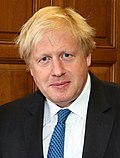
|
| Helene Pauline President |
Johnathan Bennett Prime Minister |
Valentir is a federal semi-presidential republic with a parliamentary system of governance, with the President of Valentir serving as head of state and the Prime Minister of Valentir serving as head of government. Power is divided between the legislative, executive, and judicial branches of government, with each branch checking the power of one another. This system of checks and balances was inspired by the Asterian Constitution.
The President of Valentir is elected through a two-round system of voting to serve a 5 year term. While there are no term limits in the Constitution, it has become tradition for presidents to only serve two terms. To date the only President to serve for more than two terms is Raymond Whitmore (1966-1981). Executive power lies in the hands of the President who, unlike heads of state in parliamentary republics, maintains a degree of executive authority and influence in the government, especially concerning foreign affairs, national security, and the promulgation of laws. The President also may have a hand in the legislature, working with the Prime Minister to influence Parliament's agenda and direct the legislature, though this is very dependent on whether or not the President and Prime Minister share the same political party. Should the President and Prime Minister be from opposing parties it is customary that the president focus primarily on foreign affairs and the Prime Minister focus on internal affairs in what is commonly referred to as cohabitation. In their capacity as head of state the President is also the commander-in-chief of the Valentirian National Defence Force and is the chief diplomatic representative of the nation abroad. William Ashton of the National Liberal Party is the current President of Valentir, in office since 15 January 2017.
According to the Constitution legislative power is held solely by the Federal Parliament of Valentir, a bicameral legislature consisting of the Federal Senate and the Federal Assembly. The Senate is composed of 150 Senators, 10 from each of the 15 provinces. Senators are popularly elected under the single transferable vote system of proportional representation. As such the chamber features a multitude of parties vying for power. The Assembly is composed of 600 Members of Parliament, each elected to represent a single member constituency, officially known as an electoral division (commonly referred to as electorates or seats). Members of the Assembly are elected using first-past-the-post voting. The Senate and Assembly convene at Parliament Hill in the nation's capital, Valeins.
The Constitution states that presidential, senate, and assembly elections must be held 5 years after the previous election. While it is the mandate of the constitution to have elections every 5 years, the current Prime Minister may call for a snap election in Parliament before that time. A snap election may only occur if at least two-thirds of the Senate and Assembly vote in favour of the motion. While snap elections are more common in Parliament, a presidential recall election is possible should the President be rendered incapable of commanding the organs of state. A majority vote in both houses of Parliament and the Supreme Court of Valentir are required to trigger a recall presidential election. This action has only ever been undertaken once in Valentir's history.
The Prime Minister of Valentir is the chief legislative official and a member of the Federal Assembly of Valentir. The Prime Minister is not an elected official, rather they are a Member of Parliament. The position of prime minister belongs to the person most likely to command the confidence of the Assembly; this individual is typically the leader of the political party or coalition of parties that holds the largest number of seats in that chamber. The prime minister chooses a cabinet, on advice from the president, and its members are formally appointed by the president to form the Cabinet of Valentir, the governing apparatus of the Federal Government of Valentir. Ian Fairfax of the National Liberal Party is the current Prime Minister of Valentir, in office since 5 January 2017.
Law and criminal justice
TBD
Foreign relations
Valentir is recognized as a middle power for its role in international affairs with a tendency to pursue multilateral solutions. Valentir's foreign policy based on international peacekeeping and security is carried out through coalitions and international organizations, and through the work of numerous federal institutions. The country possesses significant soft and hard power through its extensive web of diplomatic and military commitments around the globe. Its "special relationships" with both the Federation and Negara, as well as its membership in the C20, the International Council for Democracy, and the Sublustrian League have awarded Valentir significant clout within the international community.
Over recent decades, Valentir's foreign relations have been driven by a close association with the Republic of Negara through the Southern Coian Defence Initiative, and by a desire to develop relationships with Euclea and the Asterias, particularly through La Gaullophonie and the Asterian Development Council. In 2005 Valentir secured an inaugural seat at the ADC Annual Summit following its accession to the Treaty of Breloux, and has since attended every summit that occurred afterwards. Valentir has pursued the cause of international trade liberalisation. It led the formation of the Gwaren Group and Coius-Vehemens Economic Cooperation. Valentir is a member of the Council for Economic Co-operation and Development, the International Trade Organization and the Global Institute for Fiscal Affairs, and has pursued several major bilateral free trade agreements, most recently the Valentir–Federation Free Trade Agreement and Closer Economic Relations with Denikert, with another free trade agreement being negotiated with Hyndana—the Valentir–Hyndana Free Trade Agreement—and Nematsu and Cheonhae in 2006, and as of November 2017 has put the Trans-Vehemens Partnership before parliament for ratification.
A founding member country of the Community of Nations, Valentir is strongly committed to multilateralism and maintains an international aid program under which some 60 countries receive assistance. Valentir ranks thirteenth overall in the Center for Global Development's 2017 Commitment to Development Index.
Military
The armed forces of Valentir, officially the Valentirian National Defence Force, consists of three professional service branches: the Valentirian National Army, the Valentirian National Navy, and the Valentirian National Air Force. The VNDF is officially lead by the National Defence Council and serves as the main organ in Valentirian military command. The NDC consists of the President, who serves as Commander-in-chief, the Chairman of the National Defence Council, who is appointed on advice from the Cabinet, and the Minister for Defence, who manages the armed forces as leader of the Department of Defence. The VNDF is charged with the defence of Valentir, its territories, as well as promoting Valentir's global security interests and supporting international peacekeeping efforts. Valentir is a major contributor to CN peacekeeping missions and actively participates in disaster relief and armed conflict. Its history of international intervention dates back to the Negaran Civil War and its active support of the Negaran Republicans.
They are active and regular participants in the SCDI, including the Allied Rapid Reaction Corps, as well as the Five Power Defence Arrangements, the Asterian Security Council, RIMVAC and other worldwide coalition operations.
The VNDF is a volunteer army currently consisting of 100,000 active and 150,000 reserve personnel. The budget for the fiscal year 2017-2018 allocated £48 billion to the Department of Defence, about 1.6% of the country's GDP, representing the world's Xth largest defence budget.
Valentir has a large, advanced domestic arms industry that assists in equipping its armed forces with the latest in military technology. Hannibal Weapons System, Halo Industries, AMG Transport, and a number of foreign suppliers form the bulk of government sponsored defence contracts. Domestic models include the VLAV, the Warthog Mark I, and the SCORPION. The nation's armed forces are also supplied by a number of foreign sources, the largest of which are from Estmere, Gaullica, the Federation, and Negara.
Demographics
| Rank | State | Pop. | Rank | State | Pop. | ||||
|---|---|---|---|---|---|---|---|---|---|
 Harborough  Starkhaven |
1 | Harborough | Westcliff | 5,137,863 | 11 | Carrock | Harwich | 512,365 |  Valanjou  Valeins |
| 2 | Starkhaven | Tarrington | 4,793,426 | 12 | Tāhaenui | Rotorua | 493,602 | ||
| 3 | Valanjou | Ghislaine | 2,413,217 | 13 | Couronne | Giseroux | 487,364 | ||
| 4 | Valeins | Valmont | 2,183,717 | 14 | Ostwick | Victoria | 469,246 | ||
| 5 | Haussimont | Talissieu | 1,829,911 | 15 | Amaranthine | Westcliff | 331,491 | ||
| 6 | Dunwall | New Ardougne | 1,345,771 | 16 | Verchiel | Ghislaine | 329,101 | ||
| 7 | Montsimmard | Serault | 947,611 | 17 | Ahuimanu | Oneawea | 302,483 | ||
| 8 | Whitehaven | New Embria | 701,337 | 18 | Sahrnia | Serault | 261,258 | ||
| 9 | Brieuil | L'Anguille | 623,525 | 19 | Gwaren | Tarrington | 252,689 | ||
| 10 | Kirkwall | Aldmonton | 566,093 | 20 | Montfort | Talissieu | 206,147 | ||
Ethnic Groups
TBD
Languages
A multitude of languages are used by Valentirians, with Gaullican and Estmerish (the official languages) being the mother tongues of approximately 46% and 43% of Valentirians, respectively. As of the 2015 Census, just over 6.9 million Valentirians listed a non-official language as their mother tongue. Some of the most common non-official first languages include Negaran (1,820,269 first-language speakers), Badawiyan (501,680), Floren (458,850), (431,385), Songhua (419,895), Etrurian (384,040), and Ghaillish (374,025). Valentir's federal government practices official bilingualism, which is applied by the Commissioner of Official Languages in consonance with Section 16 of the Valentirian Charter of Rights and Freedoms and the Federal Official Languages Act Gaullican and Estmerish have equal status in federal courts, parliament, and in all federal institutions. Citizens have the right, where there is sufficient demand, to receive federal government services in either Gaullican or Estmerish and official-language minorities are guaranteed their own schools in all provinces and territories.
Religion
Valentir is religiously diverse, encompassing a wide range of beliefs and customs. Valentir has no official church, and the government is officially committed to religious pluralism. Freedom of religion in Valentir is a constitutionally protected right, allowing individuals to assemble and worship without limitation or interference. The practice of religion is now generally considered a private matter throughout society and the state. With Sotirianity in decline after having once been central and integral to Valentirian culture and daily life, Valentir has become a post-Sotirian, secular state. The majority of Valentirians consider religion to be unimportant in their daily lives, but still believe in God. According to the 2015 census, 49% of Valentirians identify as Sotirian; of these, Embrian Protestants make up the largest group, accounting for 36% of the population. Much of the remainder is made up of Sotirian Catholics, who accounted for approximately 13% in the 2015 census. Secularization has been growing since the 1960s. In 2015, 31% declared no religious affiliation, compared to 14% in 2000. The remaining 15% are affiliated with non-Sotirian religions, the largest of which are Native Pantheons (7%), Serongi (3%) and Salam (2%).
Migration
Healthcare
Education
According to a 2012 report by the Council for Economic Co-operation and Development (CECD), Valentir is one of the most educated countries in the world; the country ranks first worldwide in the number of adults having tertiary education, with 53 percent of Valentirian adults having attained at least an undergraduate college or university degree. Valentir spends about 5.3% of its GDP on education. The country invests heavily in tertiary education (more than 20 000 FD per student). As of 2014, 89 percent of adults aged 25 to 64 have earned the equivalent of a high-school degree, compared to an CECD) average of 75 percent.
Since the adoption of section 23 of the Constitution Act, 1915, education in both Estmerish and Gaullican has been available in most places across Valentir. Valentiri provinces and territories are responsible for education provision. The mandatory school age ranges between 5–7 to 16–18 years, contributing to an adult literacy rate of 99 percent. In 2002, 43 percent of Valentirians aged 25 to 64 possessed a post-secondary education; for those aged 25 to 34, the rate of post-secondary education reached 51 percent. The Programme for International Student Assessment indicates that Valentirian students perform well above the CECD average, particularly in mathematics, science, and reading.
Economy
Overview
Valentir is a developed country with a mixed high-income economy. According to current market exchange rates, Valentir is the 11th largest economy in the world with a GDP (nominal) of $2.5 trillion. The Department of the Federal Treasury, led by the Chancellor of the Exchequer, is responsible for the development and execution of of the Federal government's financial and economic policies. The Federal Reserve Bank of Valentir is the entity responsible for the issuing of bank notes and coins in the nation's currency, the Valentirian Pound. The pound is the 6th largest reserve currency in Kylaris. The Federal Monetary Council, overseen by the Executive Chairman of the Federal Reserve Bank, has been responsible for setting interest rates at the level necessary to achieve the overall inflation target for the economy that is set by the Chancellor each year.
The Valentirian service sector makes up 73% of the nation's GDP. Major industries of the service sector include financial services, information technology, tourism, and real estate. Harborough is the largest city and financial capital of Valentir, home to the Valentirian Securities Exchange and a key component to the global economy with the largest GDP in Asteria Inferior. Valeins, the nation's capital, Valanjou, and Starkhaven are also large, influential financial centres. Tourism is an extremely important part of the Valentirian economy; with 22 million tourists arriving in 2016, Valentir is ranked as the thirteenth major tourist destination in the world.
The Industrial Revolution started in Valentir with an initial concentration on the textile industry, followed by other heavy industries such as shipbuilding, coal mining and steelmaking. Valentirian merchants, shippers and bankers developed significant advantages in world markets by adopting Estmerish and Weranian industrial policies as well as taking advantage of the extensive system of trade routes that were found in Southern Kylaris. Heavy industry and manufacturing began to decline, by degrees, following the Great War and the rise of Negara as "Workshop of the World." Manufacturing remains a significant part of the economy but accounted for only 16.7% of national output in 2003.
The automotive industry is a significant part of the Valentirian manufacturing sector and employs around 800,000 people, with a turnover in 2017 of £89 billion, generating £41.2 billion of exports. In 2017, the UK produced around 1.7 million passenger vehicles and 102,050 commercial vehicles. Valentir is a major centre for engine manufacturing: in 2017 around 2.4 million engines were produced. The Valentirian motorsport industry employs around 41,000 people, comprises around 3,200 companies and has an annual turnover of around £6 billion.
The aerospace industry of Valentir is the xth largest national aerospace industry in the world depending upon the method of measurement and has an annual turnover of around £51 billion. The wings for the Airbus A380 and the A350 XWB are designed and manufactured at Airbus Valentir's Dunwall facility, whilst over a quarter of the value of the Boeing 787 comes from Valentirian manufacturers including X, X and X.
X plays a critical role in some of the world's biggest defence aerospace projects. In Valentir, the company makes large sections of the X and assembles the aircraft for the Valentirian National Air Force. It is also a principal subcontractor on the X—the world's largest single defence project—for which it designs and manufactures a range of components. It also manufactures the X, the world's most successful jet training aircraft. Airbus Valentir also manufactures the wings for the X military transporter. X is the world's X-largest aero-engine manufacturer. Its engines power more than 30 types of commercial aircraft and it has more than 30,000 engines in service in the civil and defence sectors.
The Valentirian space industry was worth £15.6bn in 2014 and employed 40,500 people. It is growing at a rate of 7.5% annually, according to its umbrella organisation, the Valentirian Aeronautics and Space Administration (VASA). In 2013, the Valentirian Government pledged £60 m to the Skylon project: this investment will provide support at a "crucial stage" to allow a full-scale prototype of the SABRE engine to be built.
Natural resources: bauxite, coal, iron ore, copper, tin, gold, silver, uranium, nickel, tungsten, rare earth elements, mineral sands, lead, zinc, diamonds, natural gas, petroleum, timber, limestone, opal, oil shale, diamonds,
Major corporations: Hydrevo (Engineering), Halo Industries (IT, Aerospace, Electronics, Media), Kinektic (Telecommunications, Media, It), Hartsford (Security systems, Defence equipment, Transportation and logistics), Astriol (Pharmaceuticals and biotechnology, Retailing, Scientific equipment), Lux (Luxury consumer goods, Processed metals, Retailing), McNaire (Construction, Industrial equipment), Capricos (Financial services)
Major Industries Aerospace, Agriculture, Business and professional services, Chemicals, Consumer goods, Defence equipment, Education, Electronics, Energy, Entertainment, Financial Services, Food and beverages, Healthcare, Hospitality and leisure, Industrial equipment, Information technology, Media, Mining, Pharmaceuticals and biotechnology, Processed metals, Real estate, Retailing, Scientific equipment, Shipbuilding, Telecommunications, Tourism, Transportation and logistics, Utilities
Agriculture
Mining
Tourism
Energy
Infrastructure
Transport
Culture
Valentir's culture draws influences from its broad range of constituent nationalities, and policies that promote a "just society" are constitutionally protected. Valentir has placed emphasis on equality and inclusiveness for all its people. Multiculturalism is often cited as one of Valentir's significant accomplishments, and a key distinguishing element of Valentirian identity. In Ghislaine, cultural identity is strong, and many commentators speak of a culture of ghislaine that is distinct from Estmerish Valentirian culture. However, as a whole, Valentir is, in theory, a cultural mosaic—a collection of regional ethnic subcultures.
Valentir's approach to governance emphasizing multiculturalism, which is based on selective immigration, social integration, and suppression of far-right politics, has wide public support. Government policies such as publicly funded health care, higher taxation to redistribute wealth, the outlawing of capital punishment, strong efforts to eliminate poverty, strict gun control, and the legalization of same-sex marriage are further social indicators of Valentir's political and cultural values. Valentirians also identify with the country's health care institutions, peacekeeping, the National park system and the Valentirian Charter of Rights and Freedoms.
Historically, Valentir has been influenced by Estmerish, Gaullican, and indigenous cultures and traditions. Through their language, art and music, Indigenous peoples continue to influence the Valentirian identity. During the 20th century, Valentirians with Badawiyan, Arucian and Coian nationalities have added to the Valentirian identity and its culture. Valentirian humour is an integral part of the Valentirian identity and is reflected in its folklore, literature, music, art, and media. The primary characteristics of Valentirian humour are irony, parody, and satire. Many Valentirian comedians have achieved international success in the Asterian TV and film industries and are amongst the most recognized in the world.
Arateran influences
Early Araterans adapted the tropically based east Sublustrian culture in line with the challenges associated with a larger and more diverse environment, eventually developing their own distinctive culture. Social organisation was largely communal with families (whānau), subtribes (hapū) and tribes (iwi) ruled by a chief (rangatira), whose position was subject to the community's approval. The Estmerish and Gaullican immigrants brought aspects of their own culture to Valentir and also influenced Arateran culture, particularly with the introduction of Sotirianity. However, Araterans still regard their allegiance to tribal groups as a vital part of their identity, and Arateran kinship roles resemble those of other Polynesian peoples.





